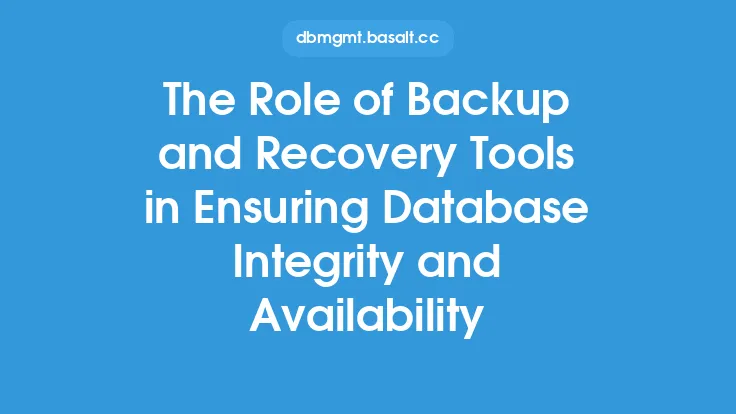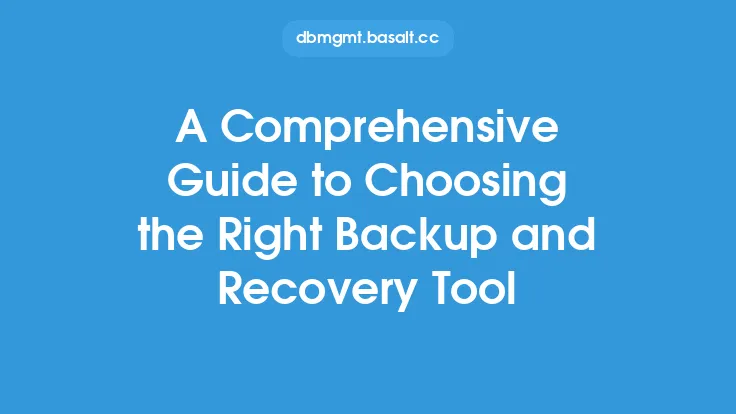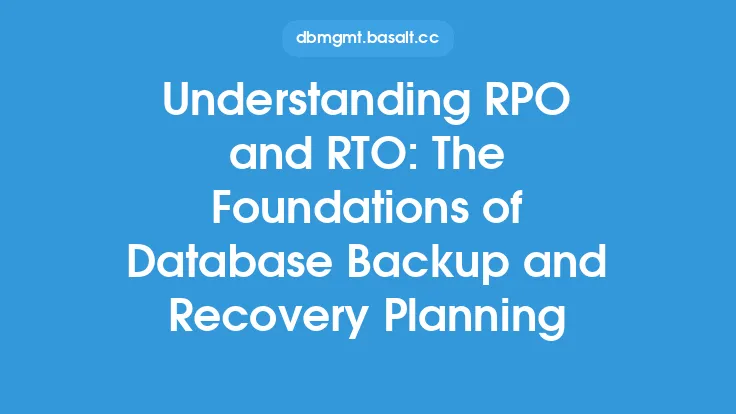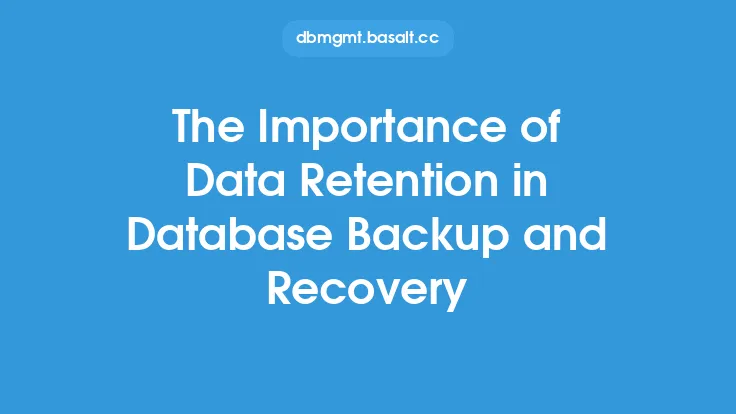Database backup and recovery is a critical aspect of database management, and scheduling plays a vital role in ensuring that backups are performed regularly and efficiently. A well-planned scheduling strategy can help minimize downtime, reduce data loss, and ensure business continuity. In this article, we will delve into the world of scheduling in database backup and recovery, exploring its importance, benefits, and best practices.
Introduction to Scheduling in Database Backup and Recovery
Scheduling in database backup and recovery refers to the process of planning and automating backup operations to ensure that data is backed up regularly and consistently. This involves setting up a schedule that defines when backups should be performed, how often they should be performed, and what data should be included in the backup. A good scheduling strategy takes into account factors such as database size, usage patterns, and business requirements to ensure that backups are performed efficiently and effectively.
Benefits of Scheduling in Database Backup and Recovery
Scheduling in database backup and recovery offers several benefits, including:
- Reduced downtime: By automating backup operations, scheduling helps minimize downtime and ensures that data is available when needed.
- Improved data protection: Scheduling ensures that data is backed up regularly, reducing the risk of data loss and corruption.
- Increased efficiency: Automated scheduling saves time and resources, allowing database administrators to focus on other critical tasks.
- Enhanced business continuity: By ensuring that data is backed up and available, scheduling helps businesses maintain continuity and minimize the impact of disasters or outages.
Types of Scheduling in Database Backup and Recovery
There are several types of scheduling in database backup and recovery, including:
- Full backup scheduling: This involves backing up the entire database at regular intervals, such as daily or weekly.
- Incremental backup scheduling: This involves backing up only the changes made to the database since the last backup, such as hourly or daily.
- Differential backup scheduling: This involves backing up all changes made to the database since the last full backup, such as daily or weekly.
- Transaction log backup scheduling: This involves backing up the transaction log files at regular intervals, such as hourly or daily.
Best Practices for Scheduling in Database Backup and Recovery
To get the most out of scheduling in database backup and recovery, follow these best practices:
- Develop a comprehensive backup strategy: Define a backup strategy that takes into account database size, usage patterns, and business requirements.
- Use automated scheduling tools: Utilize automated scheduling tools to simplify and streamline backup operations.
- Monitor and test backups: Regularly monitor and test backups to ensure that they are complete and recoverable.
- Store backups securely: Store backups in a secure location, such as an offsite storage facility or cloud storage service.
- Document backup procedures: Document backup procedures and schedules to ensure that all team members are aware of the backup strategy.
Common Scheduling Tools and Techniques
Several scheduling tools and techniques are available to help database administrators manage backup operations, including:
- Cron jobs: A Unix-based scheduling tool that allows administrators to schedule tasks to run at specific times or intervals.
- SQL Server Agent: A scheduling tool that comes with Microsoft SQL Server, allowing administrators to schedule backup jobs and other tasks.
- Oracle Scheduler: A scheduling tool that comes with Oracle Database, allowing administrators to schedule backup jobs and other tasks.
- Backup software: Specialized backup software, such as Veritas NetBackup or Commvault, that provides advanced scheduling and automation capabilities.
Challenges and Considerations in Scheduling Database Backups
While scheduling is a critical aspect of database backup and recovery, there are several challenges and considerations to keep in mind, including:
- Database size and complexity: Large and complex databases require more sophisticated scheduling strategies to ensure that backups are performed efficiently and effectively.
- Resource constraints: Scheduling backups during periods of high resource utilization can impact database performance and availability.
- Security and compliance: Scheduling backups must comply with security and regulatory requirements, such as data encryption and access controls.
- Backup window: The backup window refers to the period of time available for backups, and scheduling must take into account this window to avoid impacting database availability.
Conclusion
In conclusion, scheduling plays a vital role in database backup and recovery, ensuring that backups are performed regularly and efficiently. By understanding the importance of scheduling, benefits, types, best practices, and common tools and techniques, database administrators can develop a comprehensive backup strategy that meets their business needs. Additionally, being aware of the challenges and considerations in scheduling database backups can help administrators overcome common obstacles and ensure the availability and integrity of their data.





